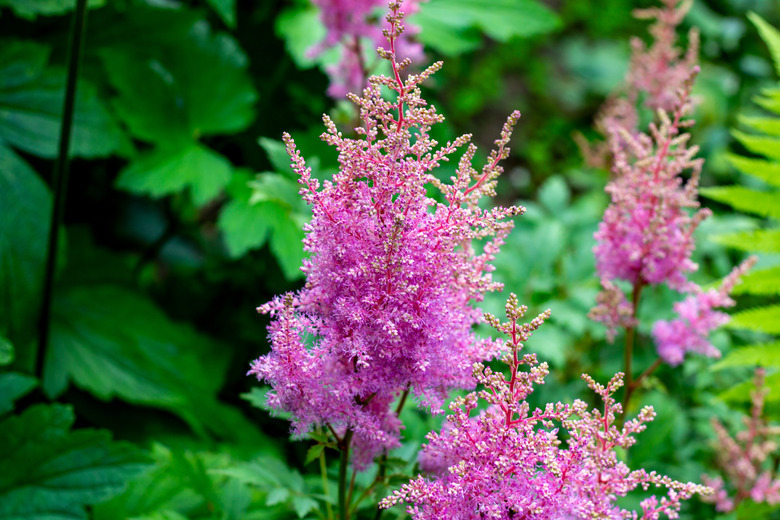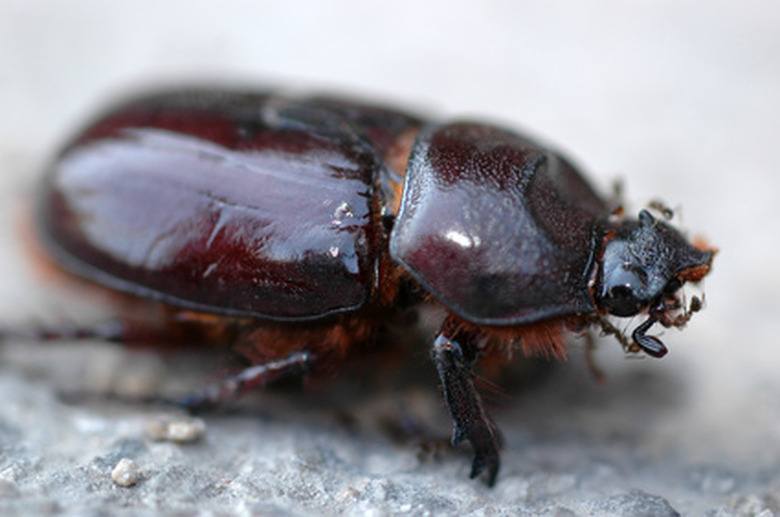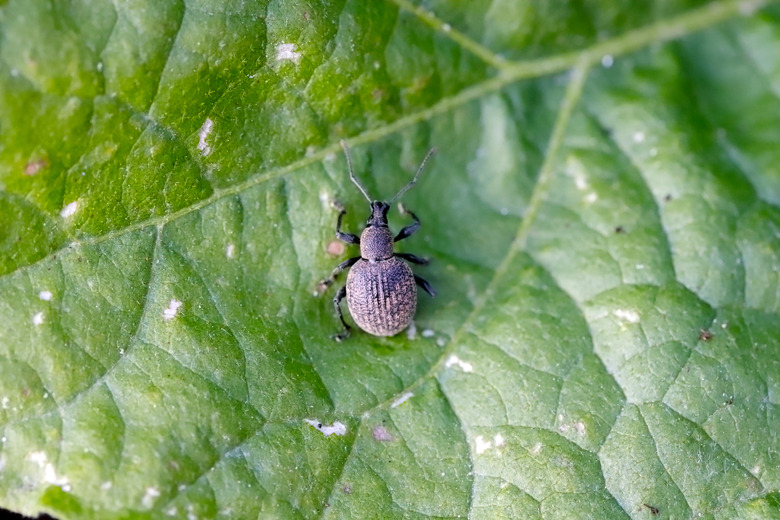Problems With Astilbe
Astilbe (Astilbe spp.), also called false spirea, is a perennial in USDA plant hardiness zones 3 through 9, depending on species and cultivar, that blooms in summer. When in bloom the multibranched flower spikes have vivid color. Astilbe before blooming has leaves that are lacey and fernlike, growing in clumps 2 to 4 feet high. Astilbe requires moisture-rich soil and prefers part shade. As with any plant, if not cared for properly, problems can develop.
Common Astilbe Diseases
Powdery Mildew Fungus
Powdery mildew is a fungal disease that grows on the surface of astilbe leaves. Not only does it look unsightly, but the mildew fungus leaches nutrients away from the plant, all the time sending out spores to spread the disease. Powdery mildew can be controlled with fungicides at the first sign.
Fungal and Bacterial Leaf Spot
Astilbes with leaf spot develop circular dark brown spots with white to gray centers beginning on the lower leaves and moving up the stem. Infected leaves curl up and become dry. The first defense is to keep the plants healthy by properly fertilizing and watering. It's best to water in the morning so the leaves have a chance to dry before evening. Affected leaves should be removed as soon as noticed. Fungicides can be applied as a preventive in the spring when new growth appears.
Fungal and Bacterial Wilts
Caused by different fungal or bacterial pathogens, fusarium wilt frequently attacks astilbe plants, according to the University of Maryland Extension. It causes wilt symptoms by restricting water flow. Symptoms include wilt on one side of the plant, leaves that are distorted and yellow, then turn brown, and eventually dry up. These drought-like symptoms occur from the wilt even if the plant is watered properly.
There's no remedy for how to save a dying astilbe if it's infected with wilt. Stopping disease spread involves throwing away infected plants and replacing the soil around the plant since the pathogens can live in the soil for many years.
Common Astilbe Pests
Asiatic Beetle Adults and Larvae
The adults feed on a variety of plants, but the astilbe is one of their favorites. The beetle is reddish-brown and begins to appear in late in June, peaking in July. Eggs are laid in the soil and the larvae begin to feed on the roots near the surface and work their way down. They overwinter in the soil and emerge in April before entering the pupal stage in May and June and becoming adults two to four weeks after that. Pesticides can be used as preventive sprays early in the season.
Black Vine Weevil
The larvae of this insect attack astilbe plants by eating their roots. They devour the small roots and then move inside to the larger roots, weakening the roots until the plant collapses and dies. The adult weevil is black with yellow hairs on the wings. Weevils feed at night and are hard to find because of the shape of the astilbe leaf. Adults and larvae survive the winter, re-appearing from May through July. The first defense again the weevil is treating the soil with beneficial nematodes to control the larvae. If infection is severe, insecticides are the next defense. Spray every three weeks during May, June and July.
Importance of Moisture for Astilbe
Astilbe requires constant moisture to thrive. The North Carolina Cooperative Extension notes the particular importance of moist soil during its bloom time. If the plants do not receive enough water, you'll see astilbe flowers turning brown and the foliage becoming crispy. The plant may even go dormant until drought conditions are over, or until the following spring. Water during dry spells to keep plants looking their best.


